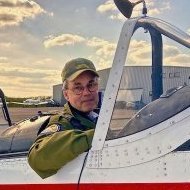Search the Community
Showing results for tags 'build'.
-
Hello everybody, Sooo… the mailman delivered the ‘precious’ package this morning. Here are for your info, some quick pics of the unboxing . Especially of the very well-printed decals. Even the smoke rings have the obligatory fuzzy outline. More later about the plastic with my first impressions . Cheers, Quang
-
Hi all, Firstly - apologies for not being about much recently - busy with D-Day 70 event/flying exped to Peenemunde/RIAT - followed by the death of one of my flying buddies in a motorcycle accident last Monday. So basically gone from some brilliant experiences - but no time for modelling, to bad week and really not in the mood. To try and break that and put mind on something more positive - I'm going to finally make a start on the new Spit. As one of the many things Tony did in his life was to take the controls of a two seat Spit this one's for you mate! OK - before I wade in - I won't pretend this is in any way definitive - it will include some mods I'll make following reference to photos/drawings/published dimensions/other kits - but my aim is to make a nice looking Spitfire - something I think easily achievable with this kit. What's more - it cost me the princely sum of £18 and I'd hate to waste it! For anyone that followed my He219 build I'd like to keep this thread on a similar - and positive - note throughout. Please chip in if you spot anything - and feel free to throw in discussion points. I really enjoyed building the UHU - and learned a huge amount in the process - but it was very much down to all the help I had from you lot!! EDIT - as I type this I've got two Spits overhead - quite auspicious! So - before I start... Kit fuselage: Top Hasegawa, middle new Revell, bottom Tamiya: Kit with Hasegawa Vb/Revell Hasegawa IIa fuselage (note difference in length from firewall (almost line-up perfectly - to front of cowl - don't ask which is right just yet): Hasegawa Vb/Revell Hasegawa IIa and Tamiya fuselage: Tamiya and Revell IIa fuselage: Comparison has already been made between the Tamiya kit and the new Revell one in Jen's excellent post - nothing further to add. Interesting to note that the nose is quite a lot longer than the Hasegawa Vb - more investigation needed - but otherwise it matches quite closely in profile - if not cross section. Back in a mo... Iain
-
Dear fellow modellers, I’m giving it to you straight: I’m building this kit by sheer gluttony because until recently I never had the slightest interest in Spitfires and I always considered 1/24 as the scale for the blurry-eyed and the ham-fisted. Until before last Christmas, I stumbled on a presentation video on YouTube of the new Airfix 1/24 Spitfire. I was so impressed that I asked myself …what if I simply regress and go back to the simpler joys of sticking plastic and dabbling paint without the fussiness of modern modelling? So here we are: a out-of-the-box (well almost ) build of the Airfix überkit. No babble needed, just lurid images for your eyes only. With Eduard PE harness Above: before shading. Below: after shading Questions and comments are welcome. Thank you all for watching, Cheers, Quang
-
I told you, my resistance is low. A mere week after I received the kit, here are the first pics of my new Hurricane in the making. Following the Revell instructions, I started with the cockpit. It’s a complicated affair as per the original but nonetheless an easy assembly as long as you take care to prepare the parts prior to reaching for the glue. Paints are Gunze , AK and Tamiya lacquers. Stock instrument panel painted with bezel decals added Seat completed. Scratch-built Sutton harness from paper and tin foil Seat installed Harness painted with Vallejo acrylics Gunsight minus reflector glass installed Escape hatch interior Cockpit in situ. Closing the fuselage next. Next time: the wheel wells Thank you for looking and Happy New Year everybody! Cheers, Quang
-
Anyone who’s a Beatles fan will be familiar with the term ‘dark horse’ attributed to George Harrison whose talents blossomed late in the Beatles’ career with the Abbey Road album. A dark horse is a previously lesser-known person or thing that emerges to prominence in a situation, especially in a competition involving multiple rivals or a contestant that on paper should be unlikely to succeed but yet still might. (Wikipedia) In our hobby, the ICM FIAT CR.42 is just that. Released without much fanfare two years ago, the Falco was obscured by its ‘rival’ the Gladiator but nevertheless became a modellers’ favourite in internet forums especially among beginners at large scale biplanes. Now hot on the heels of our friends @Fanes @spook @Dpgsbody55 and some others, here’s my take on the FIAT biplane with a nod to my host country: Belgium. In a nutshell, in September 1939, Belgian authorities ordered 34 CR.42 from FIAT. On March 6, the first of 30 planes arrived in Belgium still carrying Italian camouflage, to be assembled. They were assigned the serials R-1 to R-30 and were attributed to the IIe Groupe de Chasse between escadrilles 3/II and 4/II whose pilots began to convert in their new mounts. Two months later, on May 10 the Wermacht launched its attack against the Low Countries and Belgium. The nearly obsolete Fiat were pitted against the vastly superior Bf 109E. All the CR.42 of the 4/II were destroyed on the ground. The remaining squadron retreated to France and surrendered to the Wermacht after Belgium asked Germany for an armistice on June 28 1940. Thus ended the brief life of the Belgian FIAT. It was almost 4 months after the Belgians took delivery of their first Fiat. For a detailed account of the short combat life of the CR.42 in Belgian service, click HERE For the inventory photos of the CR.42 in Belgian service, check out the excellent Daniel Brackx’s BELGIAN WINGS. The familiar ICM kit A modern colorized version Since there are already a few detailed articles about the building of this kit, I ‘d like to concentrate on the camouflage and the painting of this model. There are quite a few period photographs of the Belgian FIAT as one can discover on the BELGIAN WINGS site. Nevertheless they all are in monochrome. There are a few controversies about the colours of the camouflage. Sure we all know they came in ‘Italian camouflage’ but which one? as it’s a VERY complex subject as we will find out. Hopefully some connoisseurs will chime in. Thank you for your commentaries and your invaluable input. Until next time, Cheers, Quang
- 86 replies
-
- fiat cr.42
- belgium
-
(and 5 more)
Tagged with:
-
'Morning ladies and gents, lads and lassies, Let me give it to you, straight. The Mustang was never one of my favorites. Something to do with the snobbish side of me, never wanting to love a plane everybody loves to love. It's sooo uncool to like a pretty face, right? That is until some months ago, when stranded in a foreign land and estranged from my trusty desk and rusty tools, all that was left for me to do was some virtual modelling on the internet. That is when I read about a new Revell release associated in some way with Radu Brinzan. I knew the name and respected the modeller. I was intrigued and read on, the previews, the reviews, the WIPs ... and soon before long I was hooked. I wrote to my friend in Belgium to buy a kit for me and in anticipation, I myself ordered an Eduard interior set. Thus, months later upon my return to my trusty desk, I was ready to join the fray. For my subject, I chose Art Fiedler's HELEN, a P-51D-5 of the 325 GR in Italy 1944. Seen here in static simulation And in simulated video The main reason for this choice is an opportunity to airbrush the famous yellow-and-black checkers and the various markings using Frisket film. I know it shows my age but what the heck? Secondly, this particular machine is retro-fitted with the dorsal fin fillet DFF found on later versions of the P-51D. So it will give me the chance to try my hand at the controversial 'swayback' fillet as these field-installed mods were known. Just what I needed to spice up an all-too conventional build... or so I thought at that time 'Nuff said. The ride is about to begin, ladies and gentlemen, all aboard. Cheers, Quang
-
Hello modeller friends, FLY Models caused quite a stir when they released their 1/32 Hurricane in April 2016. By a general consensus on the modelling forums, it's the best Hurricane on the market: accurate shape, good dimensions, adequate surface detail and unbeatable bang for the buck, etc… One question remains: HOW DOES IT BUILD? Strangely there are but a very few WIP's (one on this very forum) on the internet for such a popular model. Furthermore they all stopped still after a few instalments. What happened? Is there a monster glitch out there waiting for the unwary modeller? I decided to find out and share my experience with you. Before starting up, let me tell you that I've never been interested in the Hurricane as a plane and that I've never built a Hurricane in all my modelling years. That is before a friend showed me the FLY kit he just bought . I was unexplainably drawn to the box and before long I was cutting up the sprues, dry-fitting the parts … and buying the kit back from my friend. So let the build begins. First, the box with the 'meh' painting... … and the all-important documentation, excellent references I got from another friend. Most of it sadly OOP: Next episode: Dry-fitting the parts Until then, Cheers, Quang
-
Hello all, You might as well know that I'm standing on Max's @mozart shoulders while doing this WIP. Max led the way. I just followed. As a modeller, my main interest has always been the Cold War period with the occasional incursion in the late WWII. Although I have a fascination in the between-the wars planes and their shifting technologies, I never had the chance to build one. Let me also add that this is my FIRST BIPLANE. So hang on tight and let the ride begin! A picture of my Belgian Edition ICM Gladiator, basically a regular release with a sheet of Dutch Decals added. I won't repeat what has been already said about this kit. Let me add that the design of this kit is exceptionally clever, making the building a real pleasure ... except on one point. But more of it later. As usual, a fine coat of Mr Surfacer 1200 is sprayed on all the parts with the sprues still on. It helps to bring on the details as well as the blemishes we'll have to deal with. Then a careful study of the parts, especially since I'm new to the subject. Similar-looking parts are hand marked to avoid confusion. followed by a dry-fit of the different components. The cockpit is correctly detailed while being basic. It can be easily improved by refining and adding some smaller details like switches and map cases, ... Gun shell ejectors added Wing gun pod ejector slots Side doors opening latches refined Refined throttle Instrument panel is correct for MK I. Looks convincing with stock decals added That's it for today, folks. Hope you like it. Cheers, Quang




